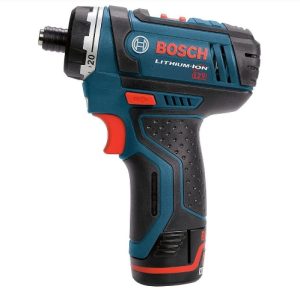How to Magnetize a Screwdriver Using a Battery
Magnetizing a screwdriver can be incredibly useful, especially when dealing with small screws that are easy to drop. This process is straightforward and can be done using a common household item: a battery. This guide will walk you through the steps required to magnetize a screwdriver using a battery, providing specific brands and models to ensure the best results.
Materials Needed
- Screwdriver: A high-quality screwdriver made of a material that can be magnetized, such as steel.
- Recommended: Wiha 32095 Insulated SoftFinish Slotted Screwdriver
- Battery: A strong battery, preferably a 9-volt battery, which is readily available and provides sufficient current.
- Recommended: Energizer 9V Max Battery
- Copper Wire: A thin, insulated copper wire to create the electromagnetic field.
- Recommended: TEMCo AWG 18 Copper Wire
- Electrical Tape: To secure the wire to the battery and screwdriver.
- Recommended: 3M Scotch Super 33+ Vinyl Electrical Tape
- Sandpaper: To strip the ends of the copper wire for better electrical contact.
- Recommended: 3M 9002NA Aluminum Oxide Sandpaper

Step-by-Step Guide
- Prepare the Copper WireCut a piece of copper wire about 2-3 feet long. Use the sandpaper to strip about an inch of insulation off both ends of the wire. This will expose the bare copper needed to make a good electrical connection.
- Wrap the Wire Around the ScrewdriverTake the stripped copper wire and start wrapping it tightly around the shaft of the screwdriver. Ensure that the coils are close together but not overlapping. Leave a few inches of wire free at each end to connect to the battery.
- Secure the WireUse electrical tape to secure the wire to the screwdriver, making sure the coils don’t move. This will ensure that the magnetic field generated will be concentrated on the screwdriver’s shaft.
- Connect the Wire to the BatteryConnect one end of the wire to the positive terminal of the 9-volt battery and the other end to the negative terminal. Hold these connections firmly or use electrical tape to secure them.
- Magnetize the ScrewdriverAllow the current to flow through the wire for about 30-60 seconds. The electric current will create a magnetic field around the wire, which in turn magnetizes the steel screwdriver. Be cautious not to leave the connection for too long, as it might overheat.
- Test the MagnetizationAfter 30-60 seconds, disconnect the wire from the battery. Test the screwdriver by picking up a small screw. If the screwdriver can hold the screw, it has been successfully magnetized. If not, repeat the process for a slightly longer duration.
Tips for Effective Magnetization
- Ensure Good Connections: Make sure the connections between the wire and the battery terminals are secure and stable. Poor connections can lead to inefficient magnetization.
- Use Quality Materials: Using a high-quality screwdriver and copper wire will yield better results. Lower quality materials might not magnetize as effectively.
- Safety Precautions: Always be cautious when working with electricity. Avoid touching exposed wires while the battery is connected to prevent electric shock.
Troubleshooting
- Screwdriver Not Magnetized: If the screwdriver doesn’t become magnetized, check the wire connections and ensure that the wire is tightly coiled around the screwdriver. Also, make sure the battery is fully charged.
- Weak Magnetization: If the magnetization is weak, increase the wrapping density of the wire coils around the screwdriver and try again.
- Overheating: If the wire or battery becomes too hot, disconnect immediately. Allow them to cool down before attempting the process again.
Why Magnetize a Screwdriver?
Magnetizing a screwdriver has several practical benefits:
- Convenience: It makes handling small screws much easier, especially in tight or hard-to-reach places.
- Efficiency: Speeds up assembly and disassembly processes by reducing the need for additional tools to hold screws in place.
- Safety: Helps prevent screws from falling into sensitive or dangerous areas, such as electronic devices or machinery.
Additional Methods
While using a battery is a quick and efficient method, there are other ways to magnetize a screwdriver:
- Using a Magnet: Simply rub a strong magnet (such as a neodymium magnet) along the screwdriver shaft several times in one direction.
- Recommended: Master Magnetics Neodymium Magnet
- Magnetizer/Demagnetizer Tool: Special tools are designed to magnetize and demagnetize screwdrivers easily.
- Recommended: Wiha 40010 Magnetizer/Demagnetizer
Conclusion
Magnetizing a screwdriver using a battery is a simple and effective method that can be done with basic materials. By following this guide and using the recommended brands and models, you can ensure a successful and efficient magnetization process. Whether for professional use or DIY projects, a magnetized screwdriver is a valuable tool to have in your toolkit.

